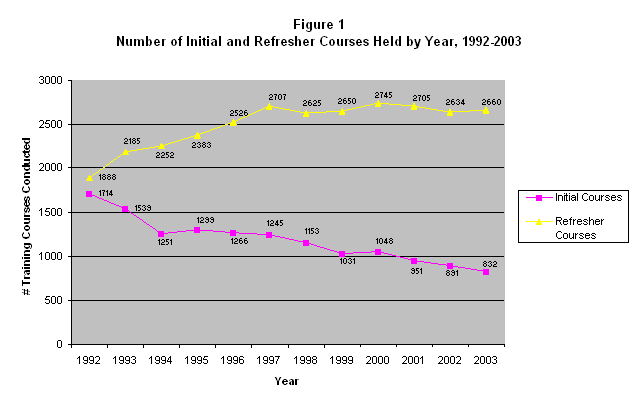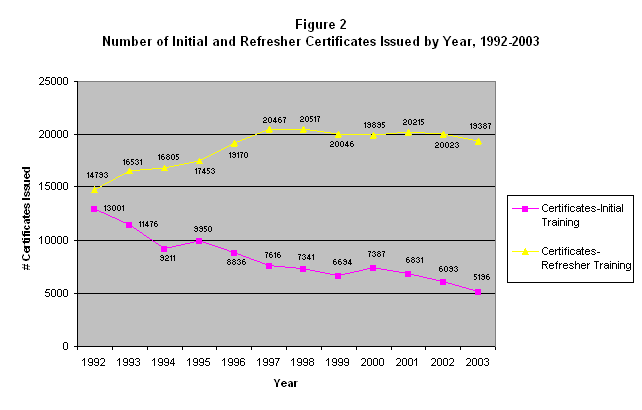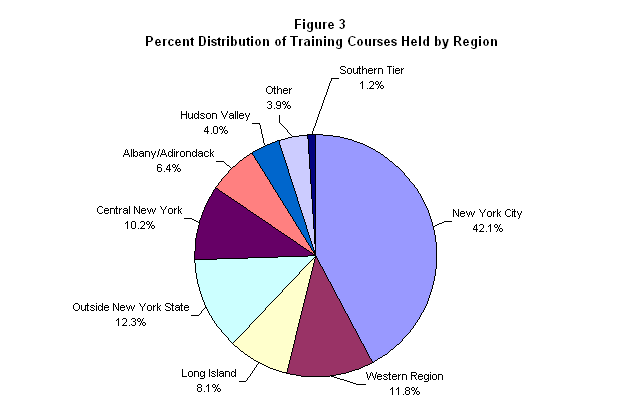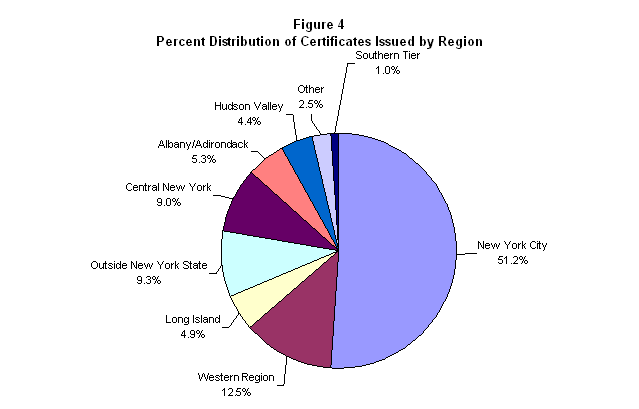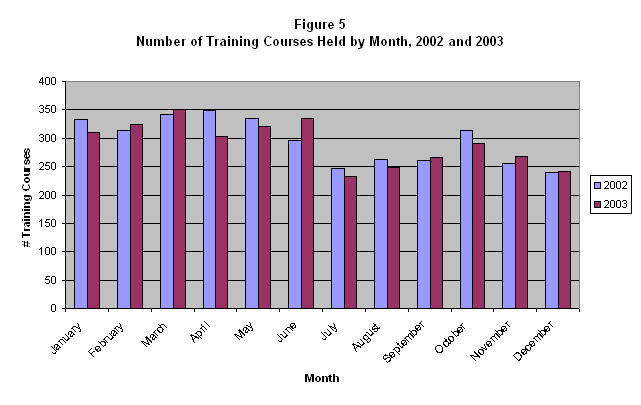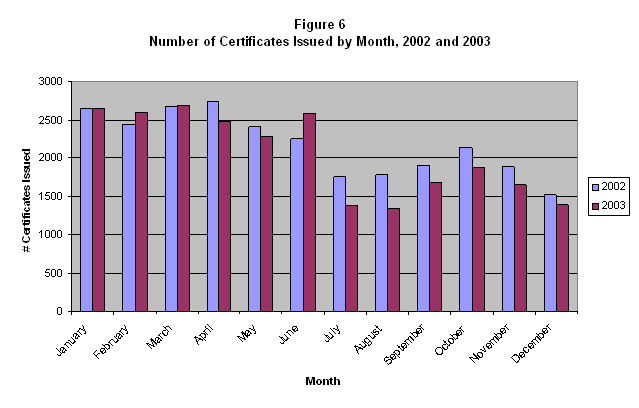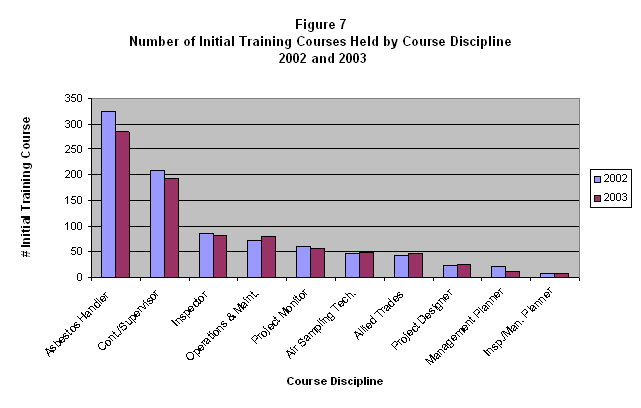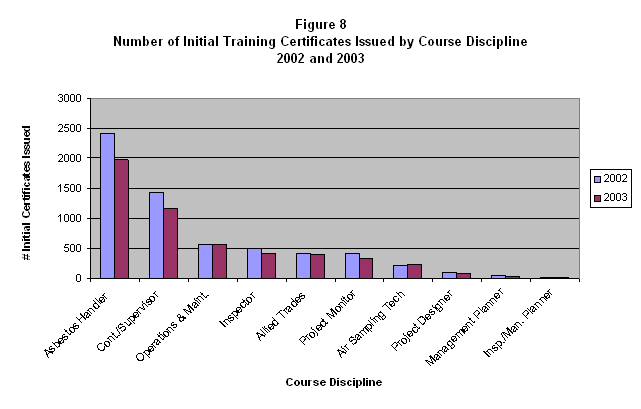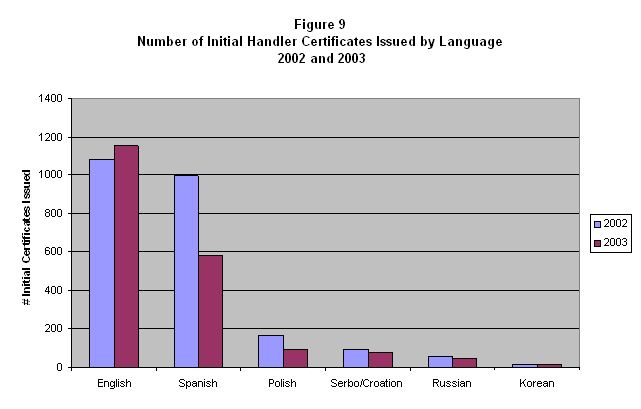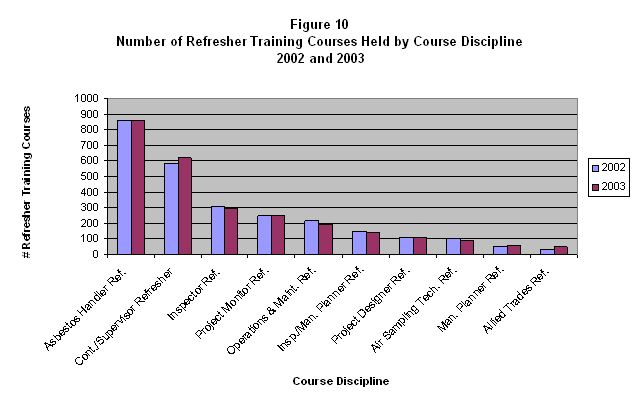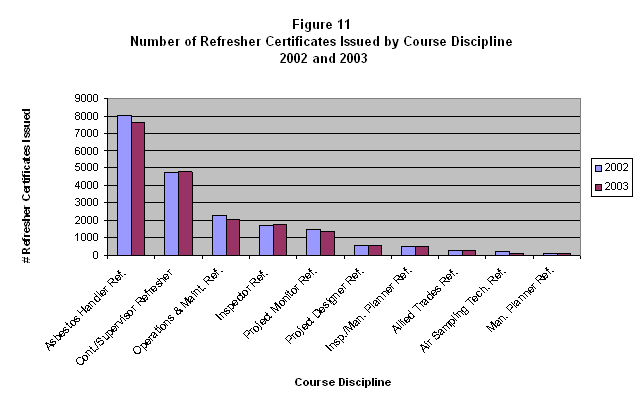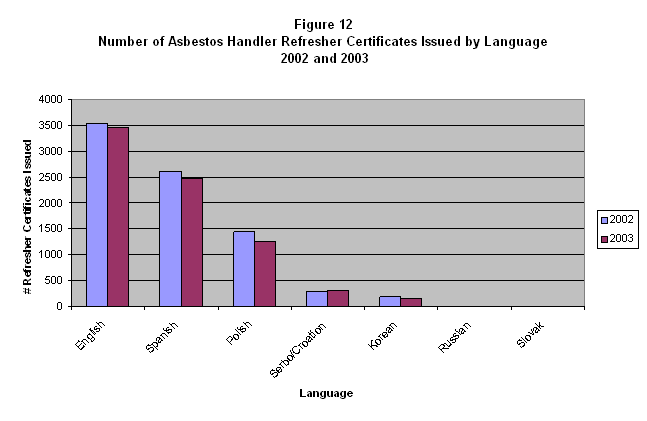Asbestos Worker Training Certification Program - Summary for 1992-2003
A complete copy of the Asbestos Worker Training Certification Program Summary for 1992-2003 is available in Portable Document Format (PDF, 56KB)
EXECUTIVE SUMMARY
The New York State Department of Health Asbestos Worker Training Certification Program (AWTC) has prepared this summary for training providers accredited under 10 NYCRR § 73. This report includes summary data on certificates issued and courses held since the program’s inception as well as detailed information on program activities for the years 2002 and 2003. Data related to specific training providers was intentionally excluded for confidentiality reasons. This summary does not include certification data maintained by the New York State Department of Labor (DOL) or the New York City Department of Environmental Protection (DEP).
A critical function of the AWTC is the performance of compliance audits. Program staff conducted announced and unannounced classroom and records audits. When violations of 10 NYCRR § 73 training requirements are identified, compliance directives are issued. The Department refers violations of a criminal nature to the appropriate authorities for investigation and possible prosecution. Actions such as falsifying course records and falsely issuing course completion certificates may constitute criminal activity. The program works collaboratively on cases with the New York State Office of the Attorney General and the United States Environmental Protection Agency Criminal Investigations Division.
Article 30 Section 905 of the Labor law was enacted in 1986 to establish "comprehensive and standardized training programs for those individuals who disturb asbestos, asbestos exposure to the general public will be minimized." The Commissioner of Health was given the authority to approve asbestos safety programs and to "promulgate rules and regulations setting forth the criteria for approval of such programs, the procedures to be followed in applying for such approval and any other rules and regulations as shall be necessary and proper to effectuate the purposes of this section and to comply with the requirements of the Federal Asbestos Hazard Emergency Act and any other applicable federal standard." Section 905 2(a) states that the Department shall asses a fee for the each asbestos safety program completion certificate and 905 2(b) states that these fees will be used for the "purpose of offsetting the costs incurred by the Commissioner of Health for the administration of asbestos safety programs."
The purpose of the AWTC is to insure that asbestos workers receive training and have the skills and knowledge necessary to permit them to remove or contain asbestos using work methods that will protect the public health as required by state and federal regulations.
Under Article 30, Section 905 of the State Labor Law, rules have been promulgated (Part 73, Title 10 and Part 56, Title 12 of the Official Compilation of Codes, Rules and Regulations of New York State) which are intended to minimize asbestos exposure to the general public by establishing comprehensive and standardized training programs for those individuals working with asbestos. Under this law, the State Labor Department is responsible for the licensing of asbestos contractors and the certification of asbestos workers. Certificates are granted in nine disciplines: 1) Inspector, 2) Management Planner, 3) Project Designer, 4) Contractor/Supervisor, 5) Asbestos Handler, 6) Project Monitor, 7) Asbestos Project Air Sampling Technician, 8) Allied Trades (Electrician, Plumbers, Carpenters and Heating/Ventilation), and 9) Operations and Maintenance. For each discipline there is a specific initial training course and it’s respective yearly refresher training course.
TRAINING COURSES HELD AND CERTIFICATES ISSUED, 1992-2003
Figures 1 and 2 display the number of courses held and DOH-2832 certificates of Asbestos Safety Training (certificates) issued by year, respectively, from 1992 to 2003.
The number of initial training courses given and certificates issued continued to decrease over the period 1992-2003. Refresher courses and certificates, on the other hand, increased through the mid 1990’s and have remained relatively stable since then. In July 2003, a certification processing change implemented by the DOL may have impacted training during the last quarter of 2003. The DOL now requires a New York State Department of Motor Vehicles (DMV) driver’s ID or non-driver’s ID in order to obtain a DOL certificate of competence. The decrease in training activity maybe the result of trainees not being able to meet the requirements set forth by the DOL.
The decrease in initial and refresher certificates each year may also be based on the slow economy during the period as well as a decrease in abatement activity in New York state. A continued downward trend is expected in 2004.
REGIONAL DATA, 2002 and 20031
Figures 3 and 4 detail the percent distribution of training courses held and certificates issued by region, respectively, for 2002 and 2003.
New York City continues to be the region where the greatest number of certificates are issued. New York City tends to have courses with a larger number of students in attendance for each course versus other regions of the state.
COURSES HELD AND CERTIFICATES ISSUED BY MONTH, 2002 AND 2003
Figures 5 and 6 illustrate the number of training courses held and number of certificates issued by month, respectively, for 2002 and 2003. July, the peak of the construction period, is usually the month with the lowest number of courses held and least number of certificates issued.
INITIAL TRAINING COURSES HELD AND CERTIFICATES ISSUED BY COURSE DISCIPLINE, 2002 AND 2003
Figures 7 and 8 detail the number of initial training courses and initial training certificates issued, respectively, for 2002 and 2003.
INITIAL HANDLER CERTIFICATES ISSUED BY LANGUAGE, 2002 AND 2003
Figure 9 shows the language comparison for the initial Asbestos Handler discipline for certificates issued in 2002 and 2003.
REFRESHER TRAINING COURSES HELD AND CERTIFICATES ISSUED BY COURSE DISCIPLINE, 2002 AND 2003
Figures 10 and 11 detail the number of refresher training courses and refresher training certificates issued, respectively, for 2002 to 2003.
The Asbestos Handler and Contractor/Supervisor disciplines continue to account for the majority of the refresher training provided. As shown in Figure 11, fewer Inspector and Project Monitor certificates are issued as these courses tend to contain smaller numbers of students on average than do Asbestos Handler and Contractor/Supervisor. It is possible, based on expected regulatory changes to Code Rule 56 by the DOL, that Project Monitor training will increase for both refresher and initial training.
REFRESHER HANDLER CERTIFICATES ISSUED BY LANGUAGE, 2002 AND 2003
Figure 12 shows the language comparison for the Asbestos Handler refresher discipline for certificates issued in 2002 and 2003.
The following number of certificates were issued for Asbestos Handler refresher in Russian and Slovak: 2002: Russian-1, Slovak-1. 2003: Russion-1, Slovak-0.
COMPLIANCE AUDITS—COMMON VIOLATIONS AND ENFORCEMENT ACTION
Listed below is a summary of the most common violations of 10 NYCRR Part 73 requirements found by program staff during classroom and records audits conducted during 2002 and 2003.
- Course Notifications and Cancellations [§73.2(h), §73.2(i)]
- Failure to Maintain Accurate/Complete Records [§73.3(l)]
- Administration of Required Examination [§73.2(l)(1)(ii), §73.3(l)(2)(iv)]
- Hands-On Training and Workshop Activities [Several sections of §73.5]
- Failure to provide adequate written material [§73.3(e)]
- Failure to use adequate training facility [§73.3(b)]
- Use of unapproved instructors [§73.3(l)(1)(i), §73.4]
During 2002 and 2003, staff audits resulted in the issuance of approximately 220 compliance directives, the suspension of three providers and the revocation of the accreditation of one provider. The Department also made three referrals to the New York State Office of the Attorney General after determining that certificates were falsely issued to individuals who did not complete the required training or where serious issues of non-compliance were identified such as, failure to properly administer final examinations and failure to perform hands on training.
_______________
1Regional Distribution of training activities is based upon telephone area code information for each accredited provider. Off-site training is not indicated separately.
